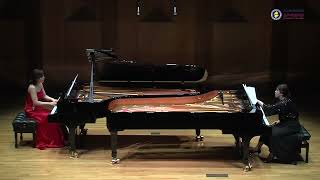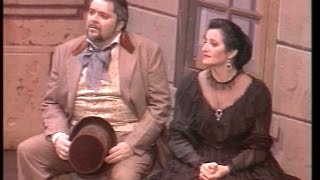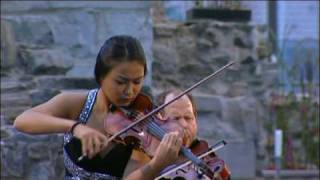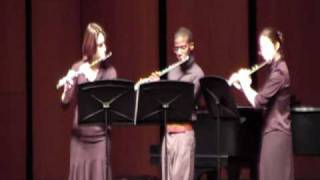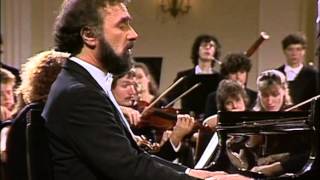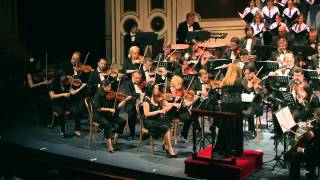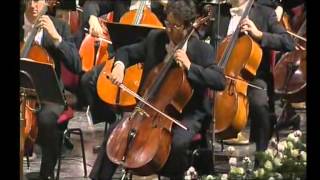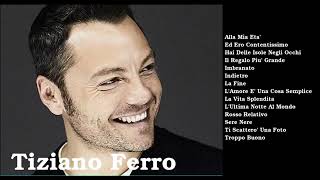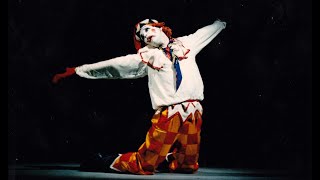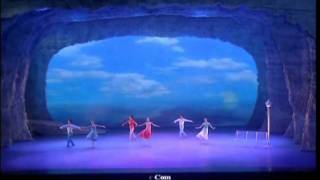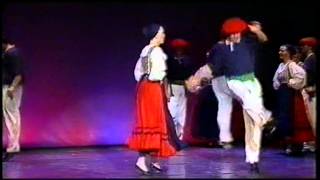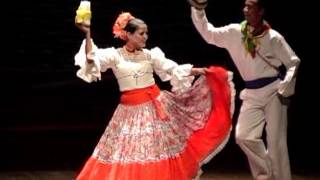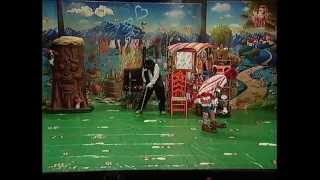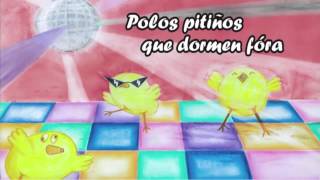June 17 is the anniversary of Stravinsky's birth.
Summer begins on June 20 at 8:51 p.m.
Recommended music videos for initiation to classical music
Igor Stravinsky (1882-1971) was a Russian pianist, conductor and composer; For many critics, the most important of the 20th century . In his long life he composed a large number of works addressing various styles such as primitivism , neoclassicism and serialism . Eventually, Stravinsky 's musical future was guided by Sergei Diaghilev , director of the Ballets Russes in Paris , who hired Stravinsky to write a ballet for his company, which would be The Firebird ; Stravinsky left Russia for the first time in 1910, to attend its premiere in Paris by the Ballets Russes . During his stay in that city, he composed two more works for the Russian Ballets : Petrushka (1911) and The Rite of Spring (1913).
The ballets reveal the composer's stylistic development: from The Firebird , whose style shows the powerful influence of Rimsky-Korsakov , of whom he was a student, to Petrushka with its strong bitonal emphasis, finally arriving at the wild polyphonic dissonance of The Consecration of spring . As Stravinsky mentioned about his premieres, his intention was to "send everything to hell" (and he succeeded: the premiere of The Rite of Spring in 1913 was probably the most famous scandal in the history of music, with fist fights between members of the public and the need for police surveillance during the second act). For many, these daring and innovative ballets practically reinvented the genre. He later traveled to the USA in 1939, where he became a naturalized citizen in 1945 and where he continued to live until his death in 1971.
Stravinsky also wrote for various types of ensembles in a wide spectrum of classical forms, from operas and symphonies to small piano pieces and works for jazz groups; But he not only achieved fame as a composer, but this also followed him as a pianist and conductor, frequently, of his own compositions. He was essentially a cosmopolitan Russian, one of the most influential composers and artists of 20th century music, both in the West and in his homeland; Likewise, he was considered by Time magazine as one of the most influential personalities of the 20th century .
Tango is a musical genre and dance, characteristic of the Río de la Plata region and its area of influence, but mainly of the cities of Buenos Aires (in Argentina) and Montevideo (in Uruguay). Six main musical styles left their mark on tango: the Andalusian tango, the Cuban habanera, the candombe, the milonga, the mazurka and the European polka . Tango revolutionized popular dance by introducing a sensual dance with an embraced couple that proposes a deep emotional relationship between each person with their own body and the bodies of the dancers with each other. Musically, it usually has a binary form (theme and chorus) or ternary (two parts to which a trio is added). On September 30, 2009, UNESCO declared it Intangible Cultural Heritage of Humanity.
Jacinto Guerrero (1895-1951) was a Spanish musician and zarzuela composer born in Ajofrín (Toledo) into a humble family whose father, Avelino Guerrero Cruz , was sacristan and director of the band in his town in which little Jacinto He played the bass drum and cymbals when he was only 6 years old. In 1914 he composed the first work written for a band that brought him enormous success and fame, Himno a Toledo . Thanks to this, he obtained a scholarship from the Provincial Council and the City Council to enter the Madrid Conservatory . In 1948, he became president of the SGAE , which led him, a year later, to travel to Brussels, Paris, Lisbon and New York ; In September of that same year, he died in the Rúber sanatorium in Madrid.
Los Gavilanes is a zarzuela in three acts and five pictures in prose, with music by Jacinto Guerrero and libretto by José Ramos Martín premiered on December 7, 1923 at the Teatro de la Zarzuela in Madrid . The action takes place in a village in Provence in the year 1845 and deals with the shock caused by Juan , an Indian who has made his fortune in Peru , when he returns to his town, since everyone believed him dead.
Today's version is performed during the VII Canary Islands Zarzuela Festival of 1999 conducted by maestro Felipe Amor
Ástor Piazzolla (1921–1992) was born in Mar de Plata , Argentina; At the age of three he moved with his family to New York and at the age of thirteen he met Carlos Gardel . On his return to Argentina , for six years he received Ginastera classes while regularly attending the Café Germinal where tango music was his daily bread. He is part of different groups, where purists considered his innovations as the “murder of tango.” With a certain dose of pessimism he moved to Paris , where he contacted Nadia Boulanger who made him believe in himself and in the possible conjunction of tango with classical music . He returned to Buenos Aires with such activity that in 1973 he suffered a heart attack; Despite what he continued with his compositions and recordings until 1990, in Paris, he suffered a thrombosis that he would not be able to overcome.
The Cuatro Estaciones Porteñas , also known as Estaciones Porteñas , are a set of four tango compositions written by Argentine musician Astor Piazzolla . He originally conceived and treated them as different compositions rather than a suite, and over time they were released on different albums. However, Piazzolla occasionally performed them together. The pieces were written for quintet with violin, piano, electric guitar, double bass and bandoneon. The adjective porteño, a name for Buenos Aires, is used by Piazzolla to give his impression of the seasons of the year in Buenos Aires .
Today we offer an arrangement of Verano Porteño , with several explicit memories of Vivaldi 's Verano , in a version for string chamber orchestra led by Korean violinist Soyoung Yoon as soloist of the ensemble.
Andrew Lloyd Webber (1948) is a composer, writer, author, producer, director and director of numerous plays from the late 20th century . He has produced 16 musicals, two soundtracks and a Latin Requiem mass . Among his awards are three Tonys , three Grammys , an Oscar , an Emmy , seven Oliviers and a Golden Globe . His company, Really Useful Group , is one of the largest in London . Some of the songs from his theater works, such as Don't Cry For Me, Argentina (from Evita ) and Pie Jesu (from his Requiem Mass ) have been successful in Europe and America outside of theater performances and have been sung by many artists. Some of his musicals such as Jesus Christ Superstar, Evita, The Phantom of the Opera and Cats have been brought to the big screen with great success.
Evita is a rock opera with music by Andrew Lloyd Webber and lyrics by Tim Rice , loosely based on the life of Eva Duarte (“Eva Perón”), Argentine political leader and second wife of President Juan Domingo Perón . The work offers a critical look at the character of Eva , from her humble origins to her rise to power and premature death at the age of thirty-three.
Don't Cry for Me Argentina is a song from the musical Evita . The theme represents María Eva Duarte 's emotional speech on the balcony of the Casa Rosada , in front of the shirtless masses, after Perón won the presidential elections of 1946 and she became the first lady of Argentina . Today it is offered to us by the singer and actress Nicole Scherzinger (Honolulu, Hawaii, 1978).
Recommended classical music videos
Joseph Bodin de Boismortier (1689 – 1755) was a French Baroque composer who wrote both instrumental and vocal works, cantatas and ballets. Boismortier 's family moved from the composer's birthplace, Thionville (Lorraine), to the city of Metz where he received his education. In 1713 he traveled to Perpignan , where he married Mara Valette ; In 1724 they moved to Paris where Boismortier began his prolific career as a composer. Already in 1747 he had published more than 100 works for different combinations of voice and instruments. Boismortier was one of the first composers who did not depend on a patron or protector, composing music of great beauty and sophistication that was highly appreciated by the French public.
The Sonata was originally a composition written to be played or "sounded" by one or more musical instruments, as the cantata was to be "sung" by one or more voices. Beginning with Classicism (1750-1810), its definition adjusts to a work generally structured in three movements (fast-slow-fast) and sometimes four, with or without a short introduction. It should not be confused with the sonata form , which is a compositional model that consists of three sections without interruption: a) exposition of the two main and contrasting themes, b) development of both themes, c) reexposition or recapitulation. Sonata form is typically applied to the first movements of sonatas, quartets, symphonies, and concertos .
Today we offer the Sonata for Three Flutes by Joseph Boismortier performed by Beverly Harlton , Roldon Brown and Leigh Stewart .
Structure : I (0´7´´) GRAVEMENT-(1´40´) ALLEMANDE .-. II (4´20´´) LENTEMENT .-. III (6´28´´) GAVOTTE EN RONDEAU- (7´27´´) GAYEMENT
Wolfgang Amadeus Mozart (1756-1791) is considered one of the three giants of musical composition along with Bach and Beethoven . Child prodigy born in Salzburg (Austria), at the age of six he mastered the keyboard and violin and began to compose. His father, Leopold, showed him off on exhausting tours of different European courts. Prolific composer (more than 600 works written from the time he was five years old until his death) he cultivated all types of musical genres: piano works, chamber music, symphonies, concert works, choral works, operas... each and every one of them, masterpieces of its gender. His operas The Magic Flute, Don Giovanni, Cosí fan Tutte, and The Marriage of Figaro are among the 10 most performed operas in the world. He died in Vienna at the age of 35.
The catalog of Mozart's works or Köchel Catalog ( Köchel Verzeichnis, in German) was created by Ludwig von Köchel in 1862 and lists the musical works composed by Wolfgang Amadeus Mozart . Each of Mozart 's works is designated by a number preceded by the abbreviation K. or KV ; number that designates the chronological order of its creation and that is actually valid for most of the works, although some works by other authors appear erroneously attributed to Mozart , and omits other authentic ones that had not yet been discovered.
The Piano Concerto No. 19 in F major, K. 459, by Wolfgang Amadeus Mozart was composed in late 1784. It is occasionally known as the Second Coronation Concerto, because Mozart performed it himself on the occasion of the coronation. coronation of Leopold II in Frankfurt , in October 1790. The concert is structured in three movements: I (0´49´´) ALLEGRO .-. II (13´38´´) ALLEGRETTO .-. III (20´41´´) ALLEGRO ASSAI.
Today it is offered to us by the Romanian pianist Radu Lupu accompanied by the Deutsche Kammerphilharmonie conducted by the American maestro David Zinman .
Felix Mendelssohn (1809-1847) was a German pianist, conductor and composer of outstanding technical and formal perfection. Child prodigy who at a very early age showed his extraordinary abilities and brother of the pianist and composer Fanny Mendelssohn , also a child prodigy. He began receiving piano lessons from his mother; At the age of eighteen he entered composition classes based on Bach 's Well-Tempered Clavier . In this way, Mendelssohn 's works show a well-established tonal clarity and a deep mastery of counterpoint. His legacy includes piano music, organ music, chamber music, overtures, symphonies, concertos, oratorios and incidental music.
Catalog of Mendelssohn 's works . His works are classified by their Opus number ( from the Latin opus 'work'; op. abbreviation) which is a term used in music to catalog the works of most composers since the 17th century .
A Midsummer Night's Dream is a musical work by Mendelssohn based on the play of the same name by Shakespeare (1564-1616) and written for the theatrical performance of said play. Between July 8 and August 6, 1826, when his career was beginning, Mendelssohn composed The Concert Overture Op. 21 which premiered in Szczecin on February 20, 1827. Later, in 1842, he wrote the Incidental Music (op. 61) for the aforementioned Shakespeare play to which he incorporated the Overture op. twenty-one.
Today we offer this Overture in interpretation of the La Bella Música Symphony Orchestra conducted by the Argentine teacher Patricia Pouchulu .
The Symphony of Psalms is a choral symphony composed by Igor Stravinsky in 1930 and commissioned by Sergei Kusevitsky to celebrate the 50th anniversary of the Boston Symphony Orchestra . The work was composed during the composer's neoclassical period and consists of three movements that are performed without interruption with texts sung by the choir that come from the Vulgate in Latin. Stravinsky said about the texts that “it is not a symphony in which I have included Psalms to be sung; On the contrary, it is the singing of the Psalms that I am turning into a symphony. Due to the religious nature of this work, each movement is dedicated to one of the theological virtues.
The FIRST MOVEMENT (0´09´´) with Psalm 38 “Exaudi orationen meam”, represents charity, the SECOND MOVEMENT (3´12´´) with Psalm 39 “Expectans expectavi Domine” represents hope and the THIRD MOVEMENT (9'05'') with Psalm 150 “Laudate Dominum” represents faith. Curiously, the work reverses the order of the theological virtues that Saint Paul makes: faith, hope and charity. Stravinsky portrays the religious character of the text through his composition techniques. He wrote substantial parts of the Symphony in fugal counterpoint, which was widely used in the Church in the Renaissance and Baroque in addition to using the large choir to create a ritual atmosphere like that of the Church and the ecclesiastical modes to identify it.
Riccardo Muti (1941) is an Italian conductor who throughout his extraordinary career has conducted the most important orchestras in the world: from the Berlin Philharmonic to the Bavarian Radio Symphony Orchestra , or from the New York Philharmonic. to the National Orchestra of France, passing through the Vienna Philharmonic, an orchestra to which he is linked by particularly close and important ties, and with which he has performed in Vienna, Salzburg and around the world since 1971. In September 2010, Riccardo Muti became music director of the Chicago Symphony Orchestra and in the same year he was named Musician of the Year by Musical America .
Recommended music videos for all tastes
Peggy Lee (1920-2002) was an American singer, songwriter and actress considered one of the most influential musical personalities in Anglo-Saxon commercial music of the 20th century . At 17 years old, after listening to Benny Goodman, she was invited to join his band. In 1942, Lee scored her first number 1, Somebody Else Is Taking My Place , followed in 1943 by Why Don't You Do Right , a song that sold more than a million copies and made her famous. In 1969 she won the Grammy Award for Best Female Pop Vocal Performance for her Is That All There Is? In 1995 he received another Grammy , this time for his entire career. He died of an acute myocardial infarction at the age of 81.
Mike Hanopol is a revolutionary singer, veteran, musician, guitarist, pop artist, folk rock artist and Filipino artist born in Leyte . He was the former bassist and guitarist for the band Juan de la Cruz . He is considered a pioneer of rock music in the Philippines during the 1970s, along with Pepe Gonzáles Smith and Wally . In his career as a musician, he has produced twenty albums, three of which received gold status as awards, while others received Aliw Awards . Additionally, Hanopol was the mentor and composer of the famous Filipino rock band known as HAGIBIS.
Haim is an American band originally formed in 2006 in the San Fernando Valley, Los Angeles, California . The band is made up of sisters Este Haim , Danielle Haim and Alana Haim . He plays guitar, bass and percussion; Danielle , guitar and drums; Alana , the guitar, the keyboard and does percussion. They are accompanied by drummer Dash Hutton . On January 4, 2013 the BBC announced that Haim had topped its annual Sound of 2013 survey of the music industry to find the most promising new musical acts for the coming year. In February 2013, Haim was named one of Fuse TV's 30 "must-see" artists at SXSW 2013 .
Tiziano Ferro (1980) is an Italian singer-songwriter. He debuted in 2001 with his album Rosso Relativo , achieving great success in Europe , mainly in Spain and in his own country. Later, he would be known in Latin America when he released his album in Spanish. In 2003 he released 111: Centoundici and in 2006 he released Nessuno è solo , both of which have sold millions of copies throughout the world. Their fourth album, Alla mia età , was released in November 2008 in Italy . In 2019 he released the promotional song "Good (bad) luck", from his seventh studio album, Accetto miracoli and in 2023, " Adiós mi amor ".
Since his childhood, he had musical interests that led him to study piano, guitar, drums and to begin musical composition. He spoke publicly about his homosexuality, coming out for the first time in Vanity Fair magazine on October 6, 2010. He is one of the main Italian pop music singers, famous not only in his native Italy , but also in some countries in Latin America, Europe and Asia .
Recommended peculiar videos
Petrushka is a ballet in one act and four scenes with choreography by Michel Fokine , music by Igor Stravinsky , libretto by Stravinsky himself and Alexandre Benois , with sets and costumes also by Alexandre Benois . It was composed during the winter of 1910-11 and premiered in Paris , at the Châtelet Theater by Sergei Diaghilev 's Ballets Russes , on June 13, 1911 and under the musical direction of Pierre Monteux . Petrushka is a puppet made of straw and sawdust with a humorous and mocking character, who comes to life and develops the ability to feel. The work is characterized among other things by the so-called Petrushka chord , consisting of a C major and F sharp major chord played simultaneously ( polytonality ), which usually accompanies the appearance of the Petrushka character almost as a leitmotif.
Scene I (0´34´´) In 1838, on Admiralty Square in Saint Petersburg, the carnival fair, Maslenitsa, is held. In the square there is a little theater where the Magician presents a show. When the curtain opens, three dolls are seen that, at the Magician's command, begin to dance. The Moor and Petrushka are in love with the Dancer, but she clearly prefers the Moor. Petrushka, in a fit of jealousy, attacks the Moor and the Magician stops the presentation. Scene II (10'34'') Locked in his room by the Magician, Petrushka protests the cruelty with which he is treated for showing his feelings. The Dancer appears and Petrushka, excited, brusquely expresses his love for her. The Dancer leaves, frightened by Petrushka's rudeness, leaving him plunged into sadness and despair. Scene III (15'05'') In the Moro's room. Although Moro is also a prisoner, he is happy with his situation. The Dancer enters and the Moor flatters her, she is pleased with the treatment and allows herself to be hugged by him. At that moment Petrushka enters and threatens the Moor, he defends himself with his scimitar and makes Petrushka flee. Scene IV ( 21'43'') The carnival fair in St. Petersburg Square. People have continued with the celebrations without realizing what is happening inside the theater. The party is interrupted when Petrushka comes out of the theater pursued by the Moor. The Moor kills Petrushka. People get scared thinking that a murder has been committed, the police arrive and question the Magician, but there is only a rag doll on the ground. The party comes to an end, everyone leaves and the Magician takes Petrushka to the little theater but Petrushka's ghost appears threateningly from the ceiling.
David Fang (1986) is a Chinese composer of stage music, film, television and audiovisuals. Born in Shanghai and raised in New York , he began studying violin as a child with his father, a professional musician, and formalized his music and musical technology studies in New York . At the age of 12 he wrote his first orchestral work and from then on he would continue composing music for video games and others. When he was only fourteen years old, he wrote the ballet The Four Seasons, of which today we present his Summer staged by Shanghai Dance Academy.
Argia Dantza Taldea is a Basque dance group from San Sebastian made up of about 45 members directed by Juan Antonio Urbeltz (1940); It has collected “in situ” abundant dances from the Basque Country grouped in cycles in which the authenticity of the choreographic, musical and instrumental versions, and even costumes, has taken precedence. At the 1968 Middlesbrough International Folklore Festival (England) he won first prize for dance among 28 groups from 22 nations. In 1998, the Alfred Toepfer Foundation in Hamburg awarded him the European Prize for Popular Art . In 2003 he presented the show Pas de Basque anchored in Basque tradition, but with a contemporary dynamic. Today we offer part of this show.
The porro and the fandango are two sister rhythms of the cumbia . The natural depositaries dance them in a circle around the musicians. This proposal has a staging for folk dance; scenario that deviates from the original format, but that preserves the body language of these two dances. (Extracted from the text at the bottom of the video).
Recommended music videos for children
Various Wikipedia articles have been used to write these texts.
The texts of Videomusicalis are written in Basque, Spanish and English.





